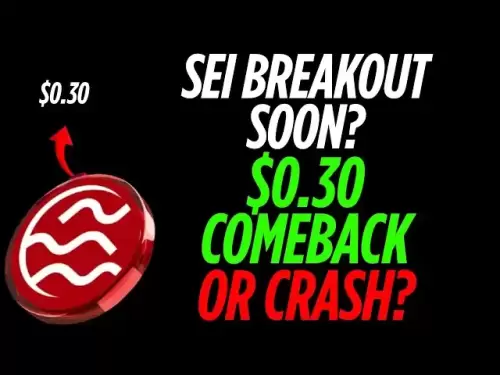-
 Bitcoin
Bitcoin $109,583.2239
0.19% -
 Ethereum
Ethereum $2,583.4612
0.48% -
 Tether USDt
Tether USDt $1.0003
-0.04% -
 XRP
XRP $2.2681
0.70% -
 BNB
BNB $659.9218
-0.52% -
 Solana
Solana $151.4961
-0.37% -
 USDC
USDC $0.9999
-0.02% -
 TRON
TRON $0.2861
1.20% -
 Dogecoin
Dogecoin $0.1718
0.04% -
 Cardano
Cardano $0.5960
-0.07% -
 Hyperliquid
Hyperliquid $40.1233
2.85% -
 Sui
Sui $2.9974
2.48% -
 Bitcoin Cash
Bitcoin Cash $497.1279
-1.76% -
 Chainlink
Chainlink $13.7275
-0.22% -
 UNUS SED LEO
UNUS SED LEO $9.0241
0.70% -
 Avalanche
Avalanche $18.5536
-0.88% -
 Stellar
Stellar $0.2421
1.39% -
 Toncoin
Toncoin $2.8593
-0.51% -
 Shiba Inu
Shiba Inu $0.0...01187
-0.07% -
 Litecoin
Litecoin $90.0023
2.90% -
 Hedera
Hedera $0.1590
2.79% -
 Monero
Monero $322.1495
0.00% -
 Polkadot
Polkadot $3.5453
-1.00% -
 Dai
Dai $1.0000
-0.01% -
 Bitget Token
Bitget Token $4.5733
-1.06% -
 Ethena USDe
Ethena USDe $1.0002
-0.01% -
 Uniswap
Uniswap $7.6345
3.03% -
 Aave
Aave $279.2583
0.47% -
 Pepe
Pepe $0.0...01003
-1.52% -
 Pi
Pi $0.4941
-0.32%
How to perform cross-chain transactions through Uniswap?
Use Uniswap for cross-chain swaps by leveraging bridges like Hop Protocol, Connext, or AnySwap to move assets between blockchains like Ethereum and Polygon.
Apr 10, 2025 at 07:14 am
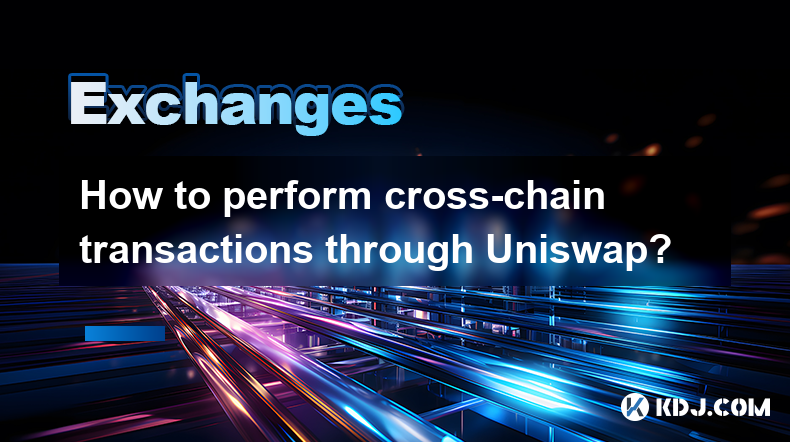
Performing cross-chain transactions through Uniswap involves leveraging various tools and protocols to move assets between different blockchain networks. Uniswap, primarily built on Ethereum, can be used in conjunction with other platforms to facilitate these transactions. This article will guide you through the process, highlighting the necessary steps and tools required to execute cross-chain swaps effectively.
Understanding Cross-Chain Transactions
Cross-chain transactions refer to the transfer of assets between different blockchain networks. This process is essential for users who want to leverage the benefits of multiple blockchains, such as different transaction speeds, fees, and functionalities. Uniswap, being a decentralized exchange (DEX) on Ethereum, can be integrated with other protocols to enable these transactions.
To perform a cross-chain transaction through Uniswap, you will need to use a bridge or a cross-chain swap service. These services act as intermediaries, allowing you to move assets from one blockchain to another. Some popular options include Hop Protocol, Connext, and AnySwap.
Preparing for a Cross-Chain Transaction
Before you begin, ensure you have the following:
- A wallet compatible with multiple blockchains: Wallets like MetaMask or Trust Wallet support multiple networks and are essential for managing your assets across different chains.
- Sufficient funds: You need to have enough cryptocurrency to cover the transaction fees on both the source and destination chains.
- Access to a cross-chain bridge or swap service: Choose a reliable service that supports the blockchains you wish to interact with.
Using Hop Protocol for Cross-Chain Transactions
Hop Protocol is a popular choice for cross-chain swaps due to its ease of use and support for multiple blockchains. Here’s how you can use it to perform a cross-chain transaction through Uniswap:
- Connect your wallet: Visit the Hop Protocol website and connect your wallet (e.g., MetaMask).
- Select the asset and chains: Choose the asset you want to transfer and the source and destination chains. For example, if you want to move ETH from Ethereum to Polygon, select ETH as the asset, Ethereum as the source, and Polygon as the destination.
- Enter the amount: Input the amount of the asset you wish to transfer. Ensure you have enough to cover the bridge fees.
- Confirm the transaction: Review the transaction details and confirm the transfer. Your wallet will prompt you to sign the transaction.
- Wait for the transfer: The transfer process may take some time, depending on the network congestion and the specific bridge used.
- Swap on Uniswap: Once the asset is on the destination chain, you can use Uniswap on that chain to swap it for another token if needed.
Using Connext for Cross-Chain Transactions
Connext is another service that facilitates cross-chain swaps and can be used in conjunction with Uniswap. Here’s how to use it:
- Connect your wallet: Go to the Connext website and connect your wallet.
- Choose the asset and chains: Select the asset and the source and destination chains. For instance, if you want to move USDC from Ethereum to Optimism, choose USDC, Ethereum, and Optimism.
- Specify the amount: Enter the amount of the asset you want to transfer, ensuring you account for the bridge fees.
- Initiate the transfer: Confirm the transaction details and initiate the transfer. Your wallet will ask you to sign the transaction.
- Wait for the transfer: The transfer time can vary based on network conditions.
- Use Uniswap on the destination chain: Once the asset is transferred, you can use Uniswap on the destination chain to swap it for another token if desired.
Using AnySwap for Cross-Chain Transactions
AnySwap is a versatile cross-chain swap service that supports a wide range of blockchains. Here’s how to use it for cross-chain transactions through Uniswap:
- Connect your wallet: Visit the AnySwap website and connect your wallet.
- Select the asset and chains: Choose the asset you want to transfer and the source and destination chains. For example, if you want to move DAI from Ethereum to Binance Smart Chain, select DAI, Ethereum, and BSC.
- Enter the amount: Specify the amount of the asset you wish to transfer, ensuring you have enough to cover the bridge fees.
- Confirm the transaction: Review the transaction details and confirm the transfer. Your wallet will prompt you to sign the transaction.
- Wait for the transfer: The transfer process may take some time, depending on the network congestion and the specific bridge used.
- Swap on Uniswap: Once the asset is on the destination chain, you can use Uniswap on that chain to swap it for another token if needed.
Managing Fees and Risks
Cross-chain transactions involve various fees, including bridge fees and gas fees on both the source and destination chains. It’s crucial to understand these fees and factor them into your transaction planning. Additionally, there are risks associated with cross-chain transactions, such as smart contract vulnerabilities and potential delays. Always use reputable services and keep your assets secure.
Verifying the Transaction
After completing a cross-chain transaction, it’s important to verify that the transfer was successful. You can do this by checking the balances on both the source and destination chains. Most wallets and blockchain explorers provide tools to track your transactions and confirm their status.
Frequently Asked Questions
Q: Can I perform cross-chain transactions directly on Uniswap without using a bridge?
A: No, Uniswap itself does not support direct cross-chain transactions. You need to use a bridge or a cross-chain swap service to move assets between different blockchains before using Uniswap on the destination chain.
Q: Are there any limitations on the types of assets that can be transferred through cross-chain transactions?
A: Yes, the availability of assets for cross-chain transactions depends on the bridge or swap service you use. Some services support a wide range of tokens, while others may be limited to specific assets.
Q: How long does a cross-chain transaction typically take?
A: The duration of a cross-chain transaction can vary widely, typically ranging from a few minutes to several hours, depending on the networks involved and the current congestion levels.
Q: What should I do if my cross-chain transaction fails or gets stuck?
A: If your transaction fails or gets stuck, first check the status on the bridge or swap service’s website. If the issue persists, contact their support team for assistance. It’s also a good practice to keep some funds in your wallet to cover potential additional fees for resolving the issue.
Disclaimer:info@kdj.com
The information provided is not trading advice. kdj.com does not assume any responsibility for any investments made based on the information provided in this article. Cryptocurrencies are highly volatile and it is highly recommended that you invest with caution after thorough research!
If you believe that the content used on this website infringes your copyright, please contact us immediately (info@kdj.com) and we will delete it promptly.
- BONK Price Prediction: Meme Coin Mania and What's Next?
- 2025-07-04 12:30:13
- NYAG, Stablecoins, and FDIC Protections: Navigating the Regulatory Maze
- 2025-07-04 13:10:15
- Level Up Your DeFi Game: Phantom Wallet and the Ultimate DeFi Experience
- 2025-07-04 13:10:15
- Bitcoin Surge: Breaking Down the $109,000 Barrier and the Road to $165,000?
- 2025-07-04 12:30:13
- Solana ETF Inflows & Snorter Token: A New Era for Meme Coin Trading?
- 2025-07-04 12:50:12
- Ripple, Stablecoin, and First Bank: Decoding the Latest Moves in Crypto
- 2025-07-04 12:50:12
Related knowledge
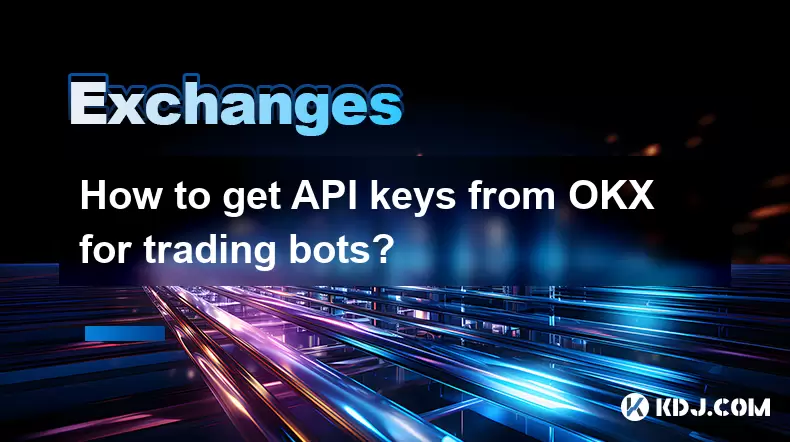
How to get API keys from OKX for trading bots?
Jul 03,2025 at 07:07am
Understanding API Keys on OKXTo interact with the OKX exchange programmatically, especially for building or running trading bots, you need to obtain an API key. An API (Application Programming Interface) key acts as a secure token that allows your bot to communicate with the exchange's servers. On OKX, these keys come with customizable permissions such ...
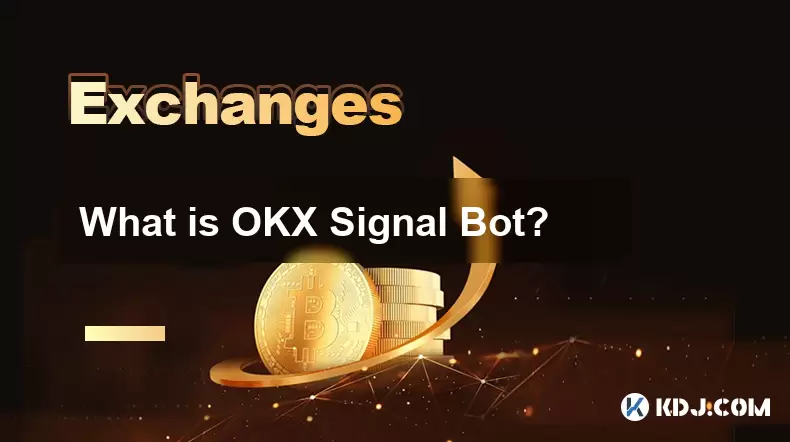
What is OKX Signal Bot?
Jul 02,2025 at 11:01pm
Understanding the Basics of OKX Signal BotThe OKX Signal Bot is a feature within the OKX ecosystem that provides users with automated trading signals and execution capabilities. Designed for both novice and experienced traders, this bot helps identify potential trading opportunities by analyzing market trends, technical indicators, and historical data. ...
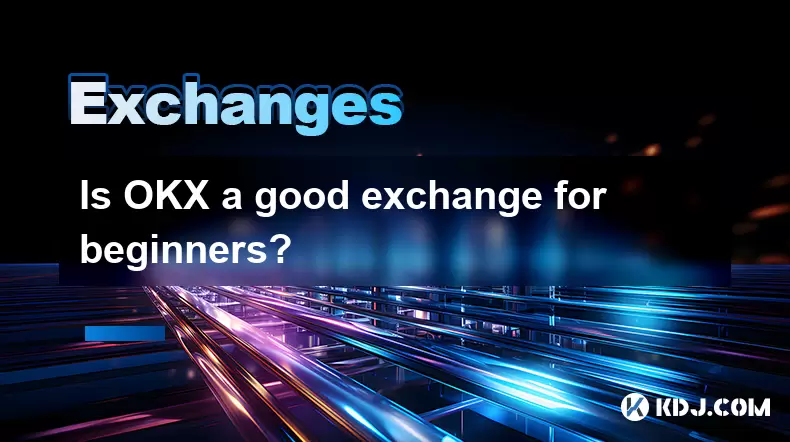
Is OKX a good exchange for beginners?
Jul 03,2025 at 05:00pm
What Is OKX and Why Is It Popular?OKX is one of the leading cryptocurrency exchanges globally, known for its robust trading infrastructure and a wide variety of digital assets available for trading. It supports over 300 cryptocurrencies, including major ones like Bitcoin (BTC), Ethereum (ETH), and Solana (SOL). The platform has gained popularity not onl...
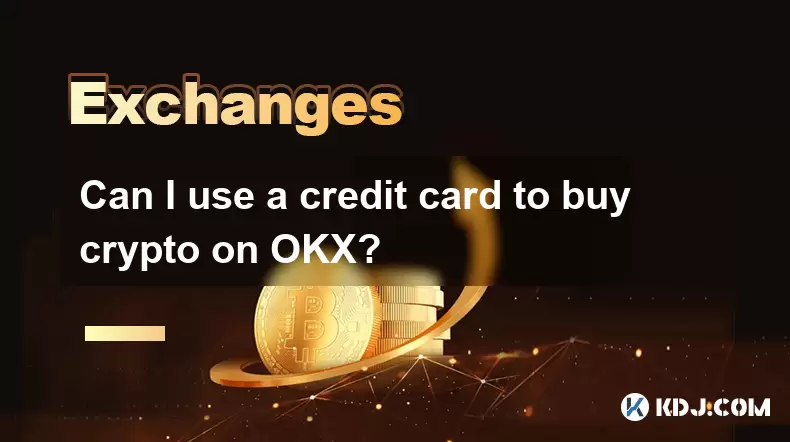
Can I use a credit card to buy crypto on OKX?
Jul 04,2025 at 04:28am
Understanding OKX and Credit Card PaymentsOKX is one of the leading cryptocurrency exchanges globally, offering a wide range of services including spot trading, derivatives, staking, and more. Users often wonder whether they can use a credit card to buy crypto on OKX, especially if they are new to the platform or looking for quick ways to enter the mark...
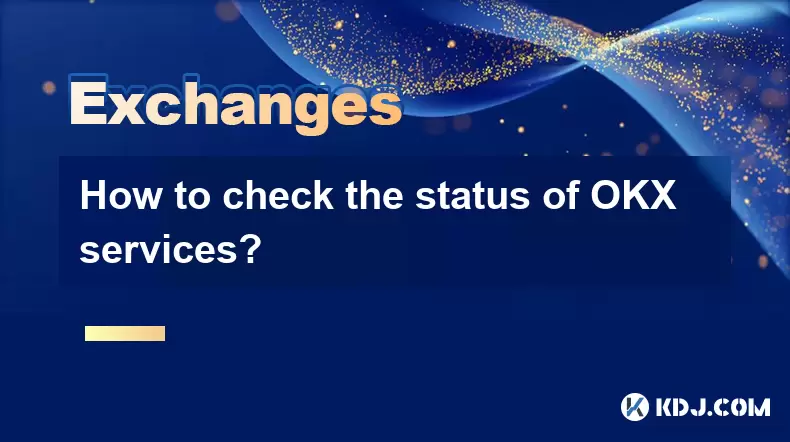
How to check the status of OKX services?
Jul 02,2025 at 11:14pm
What is OKX, and Why Checking Service Status Matters?OKX is one of the world’s leading cryptocurrency exchanges, offering services such as spot trading, futures trading, staking, and more. With millions of users relying on its platform for daily transactions, it's crucial to know how to check the status of OKX services. Downtime or maintenance can affec...
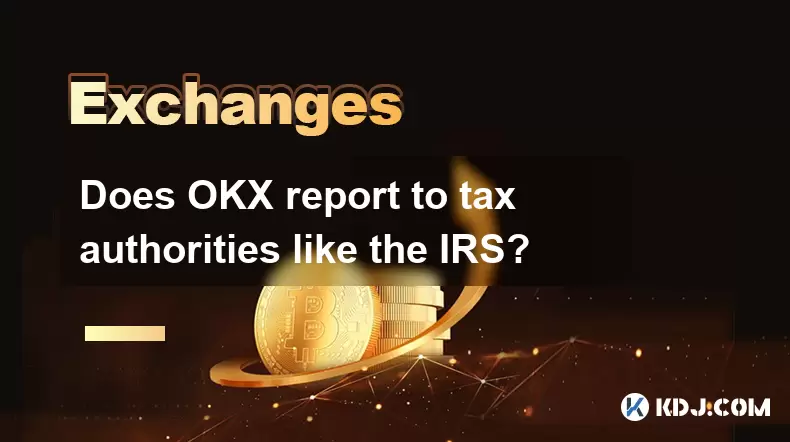
Does OKX report to tax authorities like the IRS?
Jul 03,2025 at 03:14pm
Understanding the Role of Cryptocurrency Exchanges in Tax ReportingCryptocurrency exchanges play a crucial role in facilitating digital asset transactions, but their responsibilities extend beyond trading and custody. As regulatory scrutiny intensifies globally, users are increasingly concerned about whether platforms like OKX report to tax authorities ...

How to get API keys from OKX for trading bots?
Jul 03,2025 at 07:07am
Understanding API Keys on OKXTo interact with the OKX exchange programmatically, especially for building or running trading bots, you need to obtain an API key. An API (Application Programming Interface) key acts as a secure token that allows your bot to communicate with the exchange's servers. On OKX, these keys come with customizable permissions such ...

What is OKX Signal Bot?
Jul 02,2025 at 11:01pm
Understanding the Basics of OKX Signal BotThe OKX Signal Bot is a feature within the OKX ecosystem that provides users with automated trading signals and execution capabilities. Designed for both novice and experienced traders, this bot helps identify potential trading opportunities by analyzing market trends, technical indicators, and historical data. ...

Is OKX a good exchange for beginners?
Jul 03,2025 at 05:00pm
What Is OKX and Why Is It Popular?OKX is one of the leading cryptocurrency exchanges globally, known for its robust trading infrastructure and a wide variety of digital assets available for trading. It supports over 300 cryptocurrencies, including major ones like Bitcoin (BTC), Ethereum (ETH), and Solana (SOL). The platform has gained popularity not onl...

Can I use a credit card to buy crypto on OKX?
Jul 04,2025 at 04:28am
Understanding OKX and Credit Card PaymentsOKX is one of the leading cryptocurrency exchanges globally, offering a wide range of services including spot trading, derivatives, staking, and more. Users often wonder whether they can use a credit card to buy crypto on OKX, especially if they are new to the platform or looking for quick ways to enter the mark...

How to check the status of OKX services?
Jul 02,2025 at 11:14pm
What is OKX, and Why Checking Service Status Matters?OKX is one of the world’s leading cryptocurrency exchanges, offering services such as spot trading, futures trading, staking, and more. With millions of users relying on its platform for daily transactions, it's crucial to know how to check the status of OKX services. Downtime or maintenance can affec...

Does OKX report to tax authorities like the IRS?
Jul 03,2025 at 03:14pm
Understanding the Role of Cryptocurrency Exchanges in Tax ReportingCryptocurrency exchanges play a crucial role in facilitating digital asset transactions, but their responsibilities extend beyond trading and custody. As regulatory scrutiny intensifies globally, users are increasingly concerned about whether platforms like OKX report to tax authorities ...
See all articles























